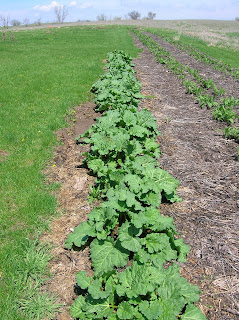Keeping You Safe
Wendell Berry was sitting on a panel when I saw him at ISU, and one of the great questions that the audience asked the panel was, How do we help young farmers get into sustainable ag these days? How do young farmers make a living from farming without going the conventional route?
The answer: Tell people (the government) to get out of their way.
Amen! It seems that everywhere I turn in I run into regulations that will set me back a lot of time and cost me a lot of money. One example the panel gave was for wine making in Kentucky. According to distribution laws in Kentucky, a small family winery was required to hire a distribution company to move their wine bottles from their storage building to their wine tasting room (no more than 50 feet away). Apparently the distribution business has quite a racket going in Kentucky. FYI--To get around these rules (which would introduce an unneeded middleman that would set them back a lot of money), the family started up a distribution company of their own.
Tim and I have experienced regulations firsthand when making our herb-infused oils. We have to rent a commercial kitchen and apply for an annual permit (which comes with annual fees and an annual inspection) in order to produce our oils. People have been making these oils for years without any problems, but in this century they're considered "potentially hazardous."
A lot of farm-related regulations are set to protect consumer safety. And I think consumer safety is a good idea. However, what most people don't realize is that numerous small local operations have been put out of business in the name of "consumer safety." Meanwhile, the big companies (the ones with influence in Washington) are the last to be touched (GMOs, aspartame, pesticides, CAFOS: health hazards that apparently we can all live with). In fact, sometimes these big ag companies can actually influence law making to specifically put niche producers out of business. For example, Monsanto is trying to get the government to make it illegal for dairies to label their milk as "rBGH-free." rBGH is a growth hormone big operations feed cows to make them produce more milk. I consider rBGH as being one more hormone than my body really needs to see. Aside from that, do I want milk that comes from artificial abundance? It has been my experience that there are natural ways and there are manufactured ways to increase production. Natural ways increase all aspects of production, ensuring that all the nutrients that should be in milk are in your milk when it hits the store shelf. Meanwhile, manufactured abundance tends to lead to nutrient-deprived foods. Do I think rBGH-free milk is inferior milk? The odds are yes. Check out this small article from Acres USA:
Monsanto, the creators of the artificial growth hormone rBGH, are complaining about the increasing number of dairies that label their milk "rBGH-free." In letters to the FDA and to the Federal Trade Commission, Monsanto claims that consumer are being duped into believing that milk from rBGH cows is somehow inferior, and that such "misleading labeling" should be stopped. The FDA approved the hormone in1993, saying that it is safe and undetectable, so at press time it remains to be seen what, if any, action will be taken.
Go Monsanto.
The next time I post, I'll wax poetic on NAIS, one of the best examples I can think of how industrial ag is influencing our government to not only hurt small local producers but also hurt all U.S. consumers. Stay tuned!












